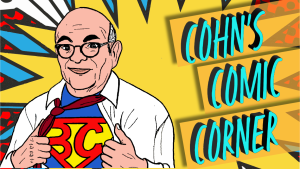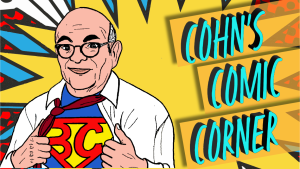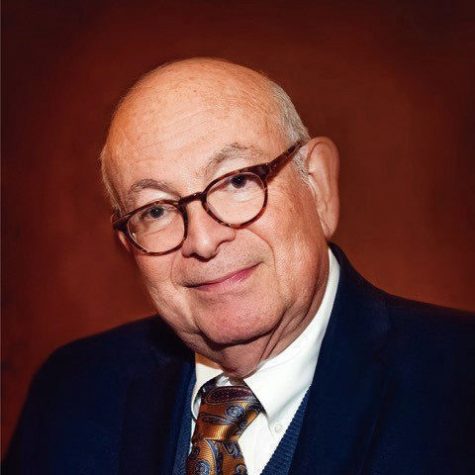‘The Batman’ reinforces Jewish elements of enduring superhero and adversaries
Published March 11, 2022
Even before comics superhero fans could fully process the spectacular box office success of Sony’s “Spider-Man: No Way Home,” Warner Brothers is awash with the super grossing “The Batman,” DC Comics’ brooding, noirish (and Jewish) Caped Crusader, which took in a jaw-dropping $130 million at U.S. and Canadian cinemas last weekend. In an understatement of the moment, David A. Gross, a film consultant said, “This is an excellent opening.” Well, duh!
In addition to raking in gazillions at theaters and streaming platforms, “The Batman” has received mostly positive reviews in major publications. A.O. Scott, veteran film critic for The New York Times describes the “Darkness” in the 14th feature-length Batman movie as “pervasive and literal,” and the Gotham City in this film as having “about as much sunshine as northern Finland in December.”
Indeed, Bob Kane and Bill Finger conceived of Bruce Wayne as a dark character in Detective Comics #1 in 1938.
ADVERTISEMENT
Siegel and Shuster and The Batman
Just as the creators of Superman, Jerry Siegel and Joe Shuster were two underpaid Jewish kids from Cleveland and Stan Lee and Jack Kirby conceived of Spider-Man and The Hulk, The Batman was the brainchild of two young Jews working in cramped offices in New York.
From the get-go, Batman and his arch villains like the Joker, Two-Face, The Riddler and the Penguin were shrouded in gloomy shadows. The Gotham City of Batman is often cold, dark and rainy in contrast to the sunny Metropolis of Superman, Clark Kent and Lois Lane.
Director (and co-screenwriter with Peter Craig) Matt Reeves deploys his actors effectively including Robert Pattinson in the lead role, Zoe Kravitz as the slinky Catwoman Selina Kyle, Paul Dano as The Riddler plus a menacing Colin Farrell as the Penguin.
ADVERTISEMENT
Catwoman made her first comic book appearance in a 1940 issue of Detective Comics. She is an ambivalent character, alternating between being a sexy seductress love interest to Batman and an anarchic burglar and nemesis to the main character, or a crime fighting partner.
Kane and Finger
In addition to the fact that Batman creators Bob Kane and Bill Finger were Jewish, there are other Jewish connections to the Caped Crusader saga. There is an extensive online feature headlined “Jewish elements in Batman: The Mezuzah on the Batcave,” from a panel discussion at a Brooklyn ComicsCon in 2016. Another panel, in 2006, moderated by comics scholar Arie Kaplan, also explores “The Jewish Aspects of Batman.”
Kaplan says “Yes he (Batman) is Jewish,” ethnically if not religiously.
Bruce Wayne became an atheist after witnessing the murder of his parents. Much of the rage he takes out on his adversaries stems from the Post Traumatic Stress Disorder from that incident.
Perhaps the “most Jewish” aspect of Batman is his very human vulnerability.
Dereck Strauker, a self-described comics maven who took part in. the 2016 Brooklyn ComicsCon, points out: “Batman is not (like Superman) an unstoppable force. He is just a man. He can make mistakes.”
Hitler put forward the Nazi myth of the Master Race of ubermenschen, supermen, contrasted with Jews and Slavs and other “non-Aryans,” who were called untermenschen, or “inferior.” Jewish values reject the Superman/lowerman dichotomy.
Just be a mensch
Just be a mensch, a decent, kind and compassionate person.
We admire the “mild-mannered” Clark Kent even more than the nearly indestructible Superman. And the melancholy Bruce Wayne is more in line with being a mensch than with Batman.
If the above seems a bit pretentious, go to see “The Batman” with a seat cushion and a jumbo box of popcorn and enjoy your first trip to an indoor theater since the arch villain of COVID-19 and its many variants kept us home.



















